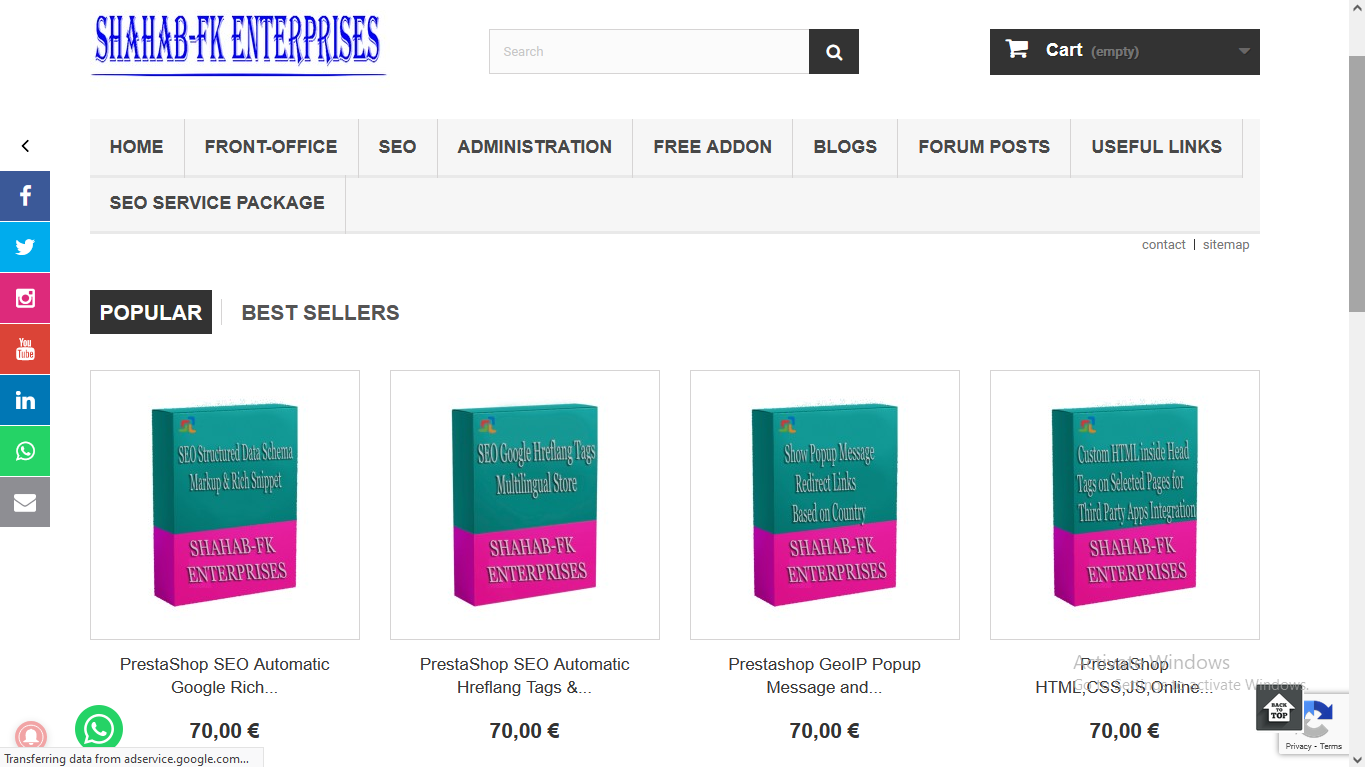PrestaShop provides a WebService API that allows you to interact with your PrestaShop store programmatically. This API enables you to perform various actions, such as managing products, categories, customers, orders, and more, using HTTP requests. To use the PrestaShop WebService API, follow these steps:
- Enable WebService API:
- Log in to your PrestaShop back office as an administrator.
- Go to “Advanced Parameters” and then “Webservice.”
- Click on the “Add new key” button to generate a new API key.
- Create a New API Key:
- Choose a name for the key to identify its purpose (e.g., “MyWebServiceKey”).
- Select the resources and operations that the API key will have access to. For example, you can allow read-only access to products or full access to manage orders.
- Set the key status to “Enabled.”
- Click on the “Generate” button to create the API key.
- Make sure to copy and save the generated key as it won’t be shown again.
- Use the API Key in Requests:
- To use the WebService API, you need to include the API key in the request headers. You can do this by adding an “Authorization” header with the value “Basic {api_key}”, where “{api_key}” is the generated API key.
- For example, in cURL, the request would look like this:
arduino
-
-
curl -H "Authorization: Basic {api_key}" https://www.example.com/api/products
-
- Make API Requests:
- You can perform various CRUD (Create, Read, Update, Delete) operations using the API endpoints. For example:
- To retrieve a list of products: Send a GET request to
/api/products. - To create a new product: Send a POST request to
/api/products. - To update an existing product: Send a PUT request to
/api/products/{product_id}. - To delete a product: Send a DELETE request to
/api/products/{product_id}.
- To retrieve a list of products: Send a GET request to
- You can perform various CRUD (Create, Read, Update, Delete) operations using the API endpoints. For example:
- API Response Format:
- The API will respond with data in XML or JSON format, depending on the “Accept” header in your request.
- To get JSON responses, set the “Accept” header to “application/json.” For XML responses, set it to “application/xml.”
- API Rate Limiting:
- PrestaShop imposes rate limits on API requests to prevent abuse. Make sure to check the rate limits for your PrestaShop version and hosting environment.
- Error Handling:
- The API will return appropriate HTTP status codes and error messages in case of any issues. Make sure to handle errors properly in your application.
- API Documentation:
- For a complete list of available resources and their endpoints, consult the official PrestaShop WebService API documentation. You can access it by appending
/apito your store’s URL or by visiting the official PrestaShop documentation website.
- For a complete list of available resources and their endpoints, consult the official PrestaShop WebService API documentation. You can access it by appending
Remember that using the WebService API involves managing sensitive data, so it’s essential to secure your API key and implement proper authentication and authorization mechanisms in your application to prevent unauthorized access. Test your API calls thoroughly and ensure they work as expected before deploying them to a production environment.

